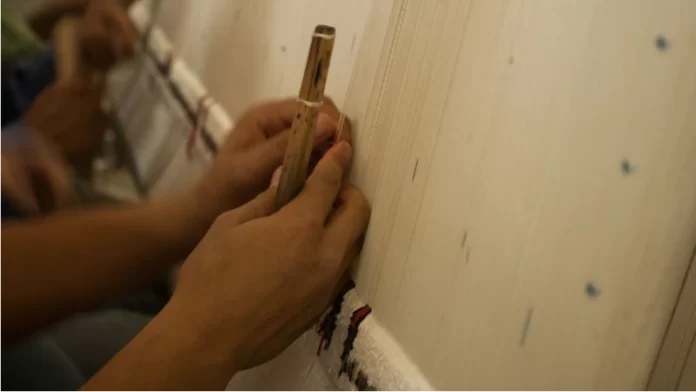Egypt boasts a long and storied tradition in the world of carpet weaving, earning its place as a global leader in the industry. This remarkable legacy traces back centuries and is marked by distinctive periods, including the influential Mamluk era, which saw the creation of some of the world’s most exquisite carpets.
The Mamluk Era: Crafting Masterpieces
During the Mamluk era, which spanned from the 14th to the early 16th century, Egyptian carpet weaving reached its zenith. The carpets produced during this time are considered some of the finest and rarest in Egyptian history, representing the pinnacle of Islamic art in the region.
These carpets were characterized by their vibrant colors, typically featuring shades of blue, red, and green. The use of simple geometric shapes, like squares and rectangles, was a defining feature of this period’s carpet design. These shapes were often repeated in intricate patterns, creating visually stunning compositions.
Intriguingly, these Mamluk carpets were divided into three main groups based on their main background designs:
The first group: These carpets had a central square background, with small square patterns at each corner. Notable examples include rugs found in the Metropolitan Museum of Art, dating back to the late 15th and early 16th centuries.
The second group: These carpets featured a main rectangular background, often adorned with a central element alongside rectangular designs. The central element could consist of 2, 3, or 5 medallions with reflective designs. One of the best examples of this group is currently housed in the Philadelphia Museum of Art.
The third group: In these carpets, the large tapestry featured a main background divided into several sections and medallions. A fine example of this group can be found at the Metropolitan Museum of Art.
One distinctive feature of most Mamluk carpets was the use of a single central thread, often starting from the rug’s center. This central thread featured fused outer edges or rectangular panels, frequently divided into triangular shapes. These panels might incorporate motifs such as cypresses, palm trees, and umbrella-shaped leaves.
Despite the many studies on Egyptian Mamluk carpets, there is still some debate among researchers regarding their exact dating. It’s important to note that the quality of carpets produced in Cairo during this period was considered superior to those made in other regions, such as Tabriz.
The Ottoman Influence: A Blend of Styles
The Ottoman presence in Egypt during the 16th century left its mark on the Egyptian carpet industry. Weavers in Cairo began to incorporate elements of Turkish and Persian carpet designs into their creations, resulting in a distinctive fusion of styles.
Ottoman carpets, in contrast to their Mamluk counterparts, embraced a broader spectrum of colors. However, the designs still retained the symmetrical shapes found in Mamluk carpets. These designs often featured motifs like tree leaves, palm trees, necklaces, tulips, rubies, cloves, and pomegranates.
One notable shift during this period was the use of Turkish knots in weaving, which lent a unique character to the designs. The patterns on these carpets often reflected the intricate history of Egypt, becoming woven narratives of the region’s heritage.
Modern Revival and Global Appeal
In the 19th century, the Egyptian carpet industry faced a decline, coinciding with the outbreak of World War I and dwindling global demand. However, a resurgence occurred in the 1950s when traditional Persian carpet designs were reintroduced. These designs drew inspiration from cities like Isfahan, Kashan, Kerman, and Tabriz, and soon found favor in the global market.
This revival wasn’t solely due to the end of World War II; it was also spurred by the concerted efforts of numerous companies focusing on authentic Egyptian carpets. These companies employed thousands of skilled weavers, who expertly crafted rugs that found resonance with a global audience. Traditional ornamental patterns remained popular well into the 1970s, ensuring the continued flourishing of the carpet industry in Egypt.
Today, Egyptian weavers and artists continue to draw from the rich tapestry of oriental motifs, incorporating influences from Iran and India into their designs. This timeless approach to carpet weaving remains highly sought after by interior designers and connoisseurs around the world.




